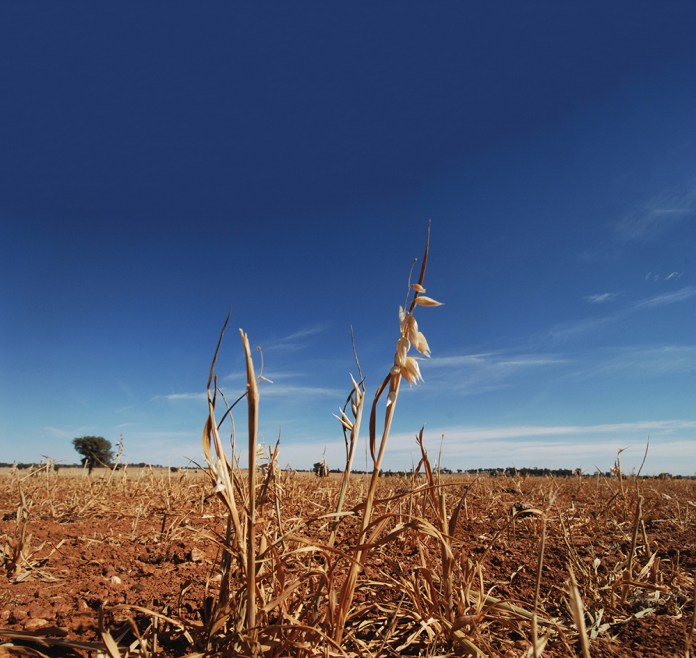
Amid all the talk about the impact of climate change, one of the areas sometimes overlooked is the potentially severe effect on the production of food.
However, increasing awareness of the threat posed by flood, pestilence, heat and drought has led to massive investment into solving some of the problems, with everyone from big business and governments to community groups working on possible solutions. That investment is needed if you look, for example, at recent research into wheat, one of the world’s stable foods. The research suggested that moving wheat production to different regions in Europe to avoid the increasing effects of climate change may not be possible. The international study, including scientists at UK-based Rothamsted Research and funded by the Biotechnology and Biological Sciences Research Council (BBSRC), suggested that the probability of adverse weather events with the potential to significantly reduce wheat yield will increase markedly across Europe, including higher temperatures and severe droughts.
One of the strategies for reducing the risk of wheat yield losses due to adverse weather is changing the time when crops flower or mature. However, the report says if this strategy was to be adopted with the current varieties available, it would lead to a lower level of global radiation to which the crop is exposed and this, in turn, would result in lower yield potential. That means that the only remaining alternative is to move growing areas but the report says that the spreading effects of climate change in Europe, for example, will make it more difficult to find areas that are not currently used for wheat and are also free of adverse weather. Dr Mikhail Semenov at Rothamsted Research and one of the lead scientists of the study said: “In 2015, average global temperature increase exceeded 1oC for the first time; this is halfway towards 2oC threshold that could result in potentially dangerous climate change. “Understanding future risks to wheat production in Europe is critically important for development of robust adaptation strategies. Our research showed that adaptation options for wheat could be limited due to a substantial increase in probability and magnitude of adverse weather events in Europe under climate change.”
Dr Malcolm Hawkesford, who is leading the 20:20 Wheat strategic programme of research at Rothamsted Research, added: “It is critical that we use the best available to us resources to model impacts of climate change on wheat and explore adaptation strategies. “These studies are essential to inform us with regards to the type of cultivars that will be required in the future in order to ensure that yield potential losses are avoided whilst the nutritional value of the crops cultivated is maintained and potentially further enhanced.” The research forms part of the MACSUR Knowledge Hub, co-funded by BBSRC under the Joint Programming Initiative for Agriculture, Food Security and Climate Change. MACSUR brings together research from 71 institutes in 18 countries.
In 2015, average global temperature increase exceeded 1oC for the first time; this is halfway towards 2oC threshold that could result in potentially dangerous climate change.” Dr Mikhail Semenov, Rothamsted Research
Research into potatoes could hold key to better understanding
In Africa, the humble potato is one of the focuses of work designed to find out how this staple food will cope with dramatic changes in the climate. According to the International Potato Center (CIP), change is already a reality for farmers in many parts of the world, warming temperatures manifested in everything from more frequent droughts and floods to an expanding distribution of crop pests and diseases. Jürgen Kroschel, Team Leader for Agroecology and Integrated Pest Management at the CIP, said: “A crop pest that currently produces three or four generations per year may produce as many as six or seven generations per year once average temperatures rise by 2ºC—3ºC. “Pests and diseases already pose major threats to the food security and livelihoods of smallholders in developing countries, yet there is a shortage of information about how much and where climate change will transform those threats.”
To help answer some of the questions, he is co-ordinating a CIP-led collaboration with several other international research centres and national programmes to predict how global warming will affect some of the most destructive crop pests and diseases in East Africa. The goal is to help local government agencies and farmers better confront pests and diseases as the climate changes. Funded by the CGIAR Research Program on Roots, Tubers and Bananas (RTB), the initiative focuses on pests and diseases affecting potato, sweet potato, banana and cassava in Africa’s Great Lakes Region. It involves researchers from CIP, Bioversity International, the International Center for Tropical Agriculture, the International Institute of Tropical Agriculture, the UK’s Food and Environment Research Agency, the Commonwealth Agriculture Bureau, US universities and national programmes in the region. Some of the tools those researchers are using were developed during a prior CIP project to model climate change’s impact on insect pests in Africa, which was funded by the German Federal Ministry of Economic Cooperation and Development.
Researchers have been working in both the laboratory and in the Ruhengeri area of Rwanda and Burundi’s Rusizi Valley, where banana, cassava, potato and sweet potato are widely grown. More than 400 farms are involved and Jurgen Kroschel said: “We are not only studying the impacts of climate change on pests and diseases, but on the livelihoods of farmers in these areas.” In tandem, scientists on the project have conducted laboratory research to better understand how rising temperatures affect the development of specific pests, data that is being used to predict how climate change will increase the risk they pose. Jürgen said: “You need individual assessments for each species to predict changes under rising temperatures. You can’t generalise.”

















